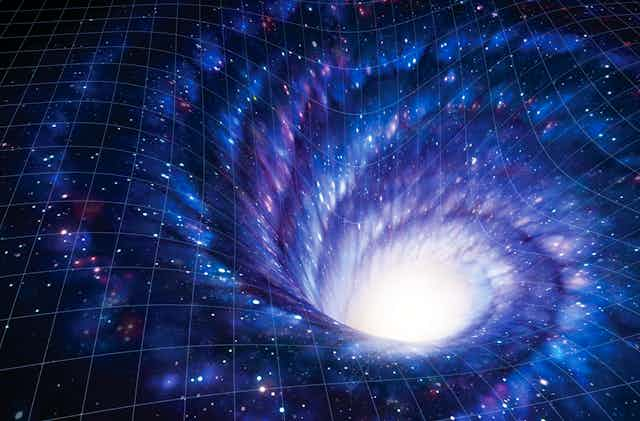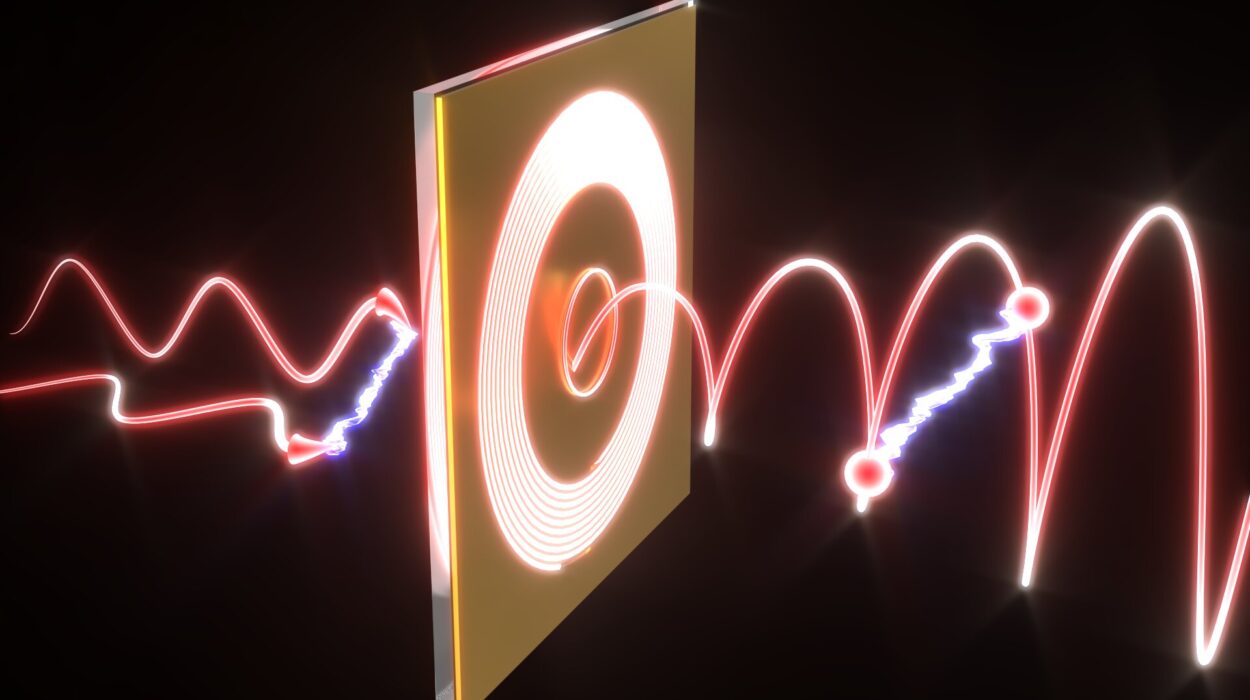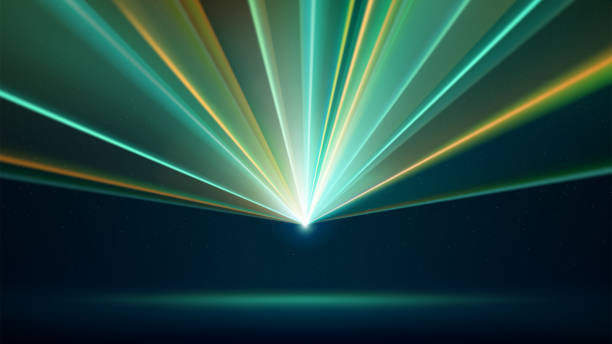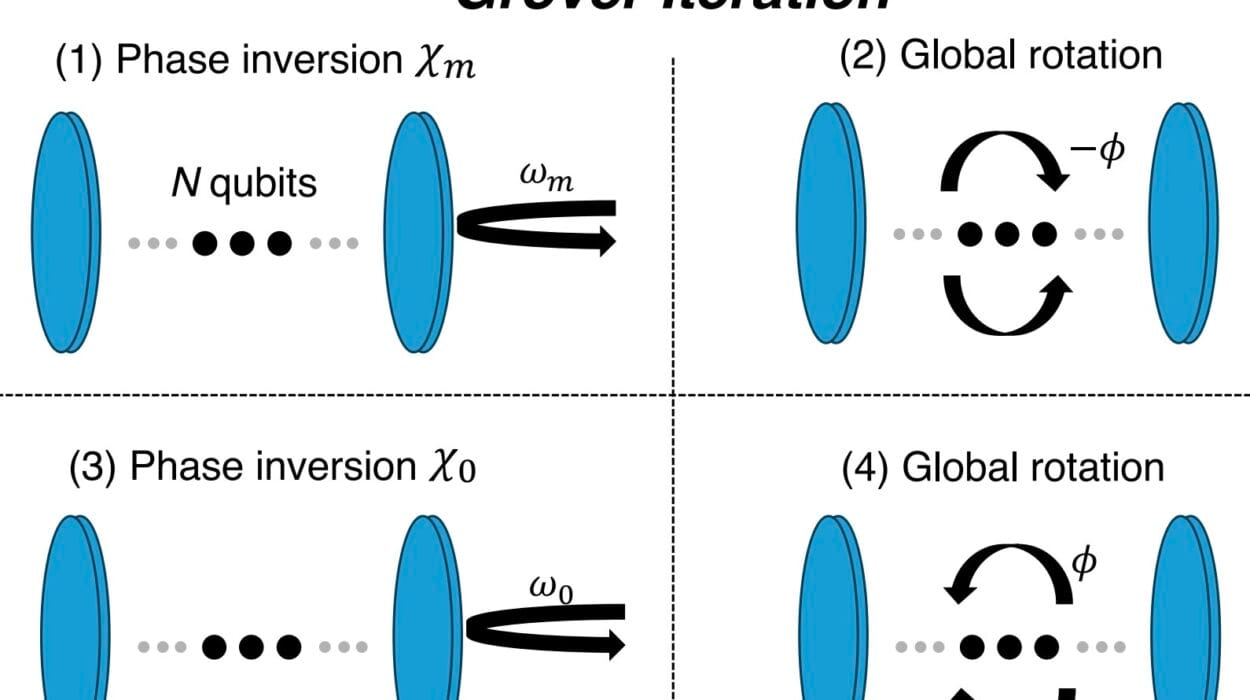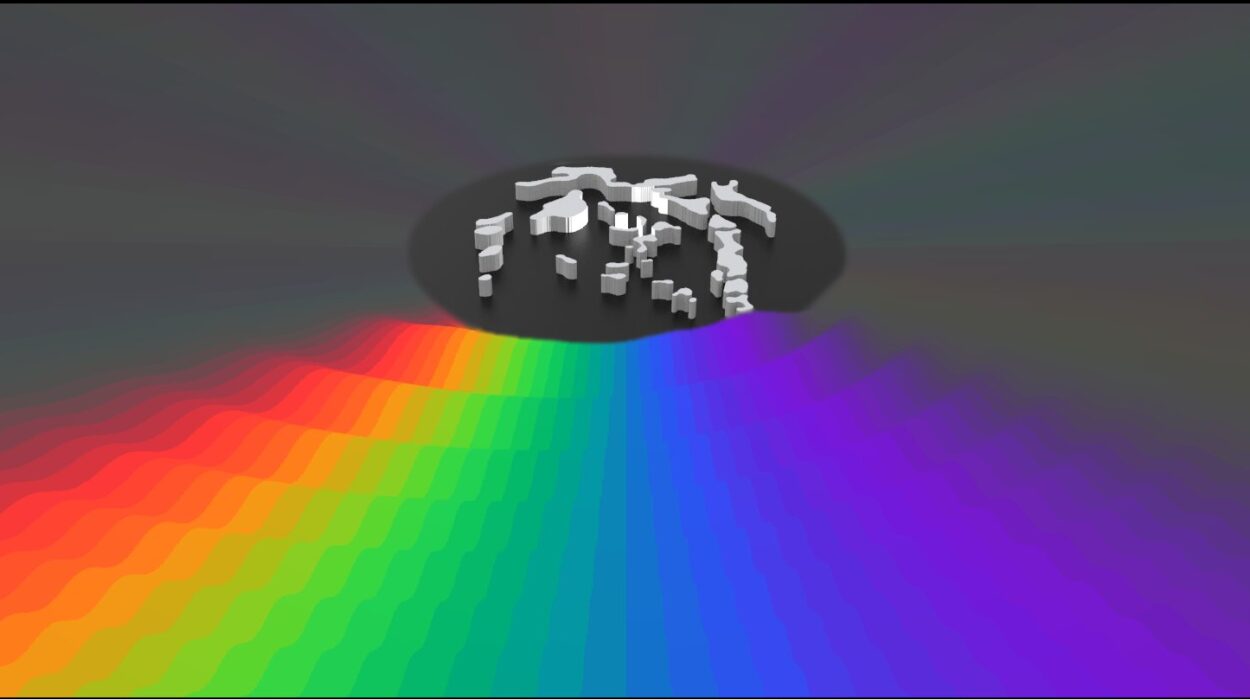From the earliest days of science fiction to the forefront of theoretical physics, wormholes have captured imaginations as cosmic shortcuts—portals that might allow travel across vast stretches of space and time, or even between parallel universes. But behind the thrilling depictions in movies, books, and TV shows lies a fascinating and complex question: What exactly is a wormhole? And is it purely science fiction, or could it be rooted in the fundamental laws of physics?
This article dives deeply into the concept of wormholes, exploring their origins in physics, the mathematical frameworks behind them, their potential realities, and the challenges that come with them. Along the way, we’ll see how wormholes illuminate some of the biggest mysteries of our universe, from quantum mechanics to the nature of spacetime itself.
The Genesis of Wormholes: From Einstein’s Equations to Popular Culture
The idea of a wormhole begins with the fabric of the universe itself—spacetime. The groundbreaking work of Albert Einstein and his collaborator Nathan Rosen in the 1930s produced the first theoretical glimpse of what we now call a “wormhole.” Officially termed the Einstein-Rosen bridge, it emerged from solutions to Einstein’s General Theory of Relativity, which describes gravity not as a force but as the curvature of spacetime by mass and energy.
Einstein and Rosen showed that under certain conditions, spacetime could be bent in such a way that two distant points could be connected by a tunnel or “bridge.” This connection would create a shortcut through the otherwise vast cosmic distances.
Yet, the original Einstein-Rosen bridges were more mathematical curiosities than practical passages. They were unstable and would collapse too quickly for anything—or anyone—to pass through. Still, this theoretical groundwork ignited decades of fascination.
The wormhole concept gained traction in science fiction with stories envisioning travel between stars, time machines, and alternate dimensions. Popular media like Star Trek, Stargate, and Interstellar brought wormholes from abstract mathematics to vivid cinematic portals, inspiring both awe and scientific curiosity.
What Is Spacetime? The Playground of Wormholes
To understand wormholes, one must first grasp the nature of spacetime. Before Einstein, space and time were considered absolute, separate entities. Newtonian physics treated space as a fixed stage where events unfold, and time as a constant, universal clock.
Einstein revolutionized this by demonstrating that space and time are interwoven into a four-dimensional continuum known as spacetime. Massive objects like stars and planets curve this continuum, and this curvature is what we perceive as gravity.
Imagine spacetime as a flexible fabric—an analogy often used in physics education. A massive object, such as the sun, creates a “dip” in this fabric. Smaller objects like Earth follow curved paths along these dips, which explains orbital motion.
Wormholes are hypothetical “shortcuts” through this fabric, bending spacetime in extreme ways so that two distant regions become directly connected through a tunnel. Instead of traveling along the fabric’s surface, one could theoretically enter a wormhole and emerge instantly far away, bypassing the intervening space.
The Mathematics Behind Wormholes: Solutions to Einstein’s Field Equations
Einstein’s General Relativity is governed by a set of highly non-linear partial differential equations known as the Einstein field equations. These relate the geometry of spacetime to the distribution of matter and energy.
Wormholes appear as particular solutions to these equations, describing spacetime configurations where two “mouths” are connected by a “throat.” The simplest example is the Schwarzschild wormhole, derived from the Schwarzschild solution describing a non-rotating black hole.
However, the Schwarzschild wormhole is a theoretical construct with serious limitations. It connects two black holes, but it is not traversable—anything entering it would be crushed by gravitational forces or trapped by event horizons.
In 1988, physicists Michael Morris and Kip Thorne introduced the concept of a traversable wormhole. They proposed theoretical models of wormholes that could remain open long enough for matter to pass through safely, without collapsing. For this, the wormhole’s throat must be held open by some form of “exotic matter” with unusual properties, such as negative energy density.
This exotic matter would counteract the immense gravitational forces trying to pinch the wormhole shut. While such matter has not been observed directly, some quantum effects, like the Casimir effect, suggest that negative energy densities could exist in nature.
Mathematically, traversable wormholes are described by metrics that satisfy the Einstein field equations while violating the known energy conditions—constraints physicists use to describe reasonable matter. This violation is what makes wormholes speculative but not impossible.
Exotic Matter and Negative Energy: Key to Keeping Wormholes Open
The need for exotic matter to stabilize wormholes is one of the biggest challenges to their real-world existence. Unlike ordinary matter, which has positive energy density, exotic matter would have negative energy density and pressure.
The Casimir effect, observed in laboratory experiments, provides a hint that negative energy densities can appear in quantum field theory. When two uncharged, parallel conducting plates are placed very close in a vacuum, the vacuum energy between them is lower than outside, creating a negative energy density region.
While this effect is tiny and occurs on microscopic scales, it hints at the theoretical possibility that exotic matter might exist or be engineered, at least in principle.
Without such matter, the throat of a wormhole would collapse instantly, making it impossible to pass through. The quest for exotic matter is thus central to wormhole research, bridging quantum physics and general relativity in a unique way.
Are Wormholes Time Machines?
One of the most tantalizing aspects of wormholes is their potential connection to time travel. The equations governing wormholes suggest that if one mouth of a wormhole moves relative to the other at relativistic speeds or is placed in a strong gravitational field, time dilation effects could create time differences between the two ends.
This could theoretically allow a traveler entering one mouth to emerge in the past or future relative to their own timeline, effectively enabling time travel.
This concept, though mathematically consistent, opens up profound paradoxes and questions about causality, such as the famous “grandfather paradox.” Physicists and philosophers debate whether the laws of physics forbid such paradoxes through mechanisms like chronology protection, proposed by Stephen Hawking, which would prevent time machines from forming.
Even so, the theoretical possibility of wormhole-based time travel captures both scientific imagination and cautionary intrigue.
Wormholes and Quantum Gravity: Where the Small Meets the Vast
While General Relativity describes gravity on large scales, it does not incorporate the principles of quantum mechanics, which govern the very small. The quest for a theory of quantum gravity aims to unify these two frameworks.
Wormholes lie at the intersection of this challenge. Recent developments in quantum physics and string theory suggest that microscopic wormholes could exist in a “quantum foam” that underlies spacetime at the Planck scale—the unimaginably tiny scale of 10⁻³⁵ meters.
In some models, these tiny wormholes might connect different quantum states or even different universes, contributing to the mysterious phenomenon of quantum entanglement.
The intriguing link between wormholes and quantum mechanics has been popularized in concepts like the ER=EPR conjecture, proposed by physicists Leonard Susskind and Juan Maldacena. This idea suggests that entangled particles might be connected by microscopic wormholes, blending geometry and information in surprising ways.
This frontier is among the most exciting and speculative areas of modern physics, hinting that wormholes could be more than just sci-fi fantasy—they might hold clues to the fundamental fabric of reality.
Observational Evidence and the Hunt for Wormholes
So far, wormholes remain hypothetical constructs with no direct observational evidence. Yet, advances in astrophysics and cosmology raise intriguing possibilities.
Some theories suggest that wormholes could mimic the gravitational signatures of black holes but differ in subtle ways. For example, the recent detection of gravitational waves—ripples in spacetime produced by colliding massive objects—offers a new tool to probe extreme cosmic events.
If wormholes exist, they might produce gravitational wave patterns distinct from black holes. Astrophysicists are developing methods to distinguish these signals, hoping future observations might reveal wormhole candidates.
Additionally, wormholes might produce unique electromagnetic signatures or lensing effects—bending and magnifying light differently than black holes—providing other possible clues.
While no confirmed wormholes have been found, these ongoing efforts reflect the profound scientific curiosity about their possible existence.
Challenges and Criticisms: Why Wormholes Remain Speculative
Despite their allure, wormholes face significant scientific challenges and skepticism. The requirement for exotic matter, the stability issues, and the absence of empirical evidence make them speculative.
Many physicists argue that wormholes may remain mathematical curiosities or that unknown quantum gravity effects prevent their formation or traversal.
Furthermore, the concept of traversable wormholes raises fundamental questions about energy conservation, causality, and the global structure of spacetime.
While wormholes have not been disproved, their feasibility as practical portals for travel remains doubtful given our current understanding.
Wormholes in Popular Culture: From Science to Fiction and Back
The enduring popularity of wormholes in fiction reflects their evocative power as gateways to the unknown. Sci-fi franchises like Star Trek used wormholes as narrative devices to explore strange new worlds and alternate realities. The film Interstellar portrayed a visually stunning wormhole near Saturn, serving as a plot device for interstellar travel grounded in real physics.
These fictional depictions often take liberties, simplifying or ignoring the complex physics to serve storytelling. Yet, they also inspire public interest in fundamental physics and cosmology.
Science fiction and science share a symbiotic relationship with wormholes: fiction imagines what physics allows, and physics sometimes finds inspiration in fiction’s bold ideas.
The Future of Wormhole Research: Science at the Edge of Reality
Advances in technology, mathematics, and quantum theory keep the study of wormholes at the frontier of physics. With growing knowledge of quantum field theory, gravitational waves, and high-energy astrophysics, the coming decades might bring breakthroughs in understanding wormholes or ruling out their existence definitively.
Interdisciplinary efforts combining general relativity, quantum mechanics, and even information theory continue to challenge and refine our ideas.
The pursuit of wormholes embodies the human desire to transcend limits—of distance, time, and knowledge. Whether wormholes remain theoretical constructs or one day become traversable portals, their exploration enriches our understanding of the universe and our place within it.
